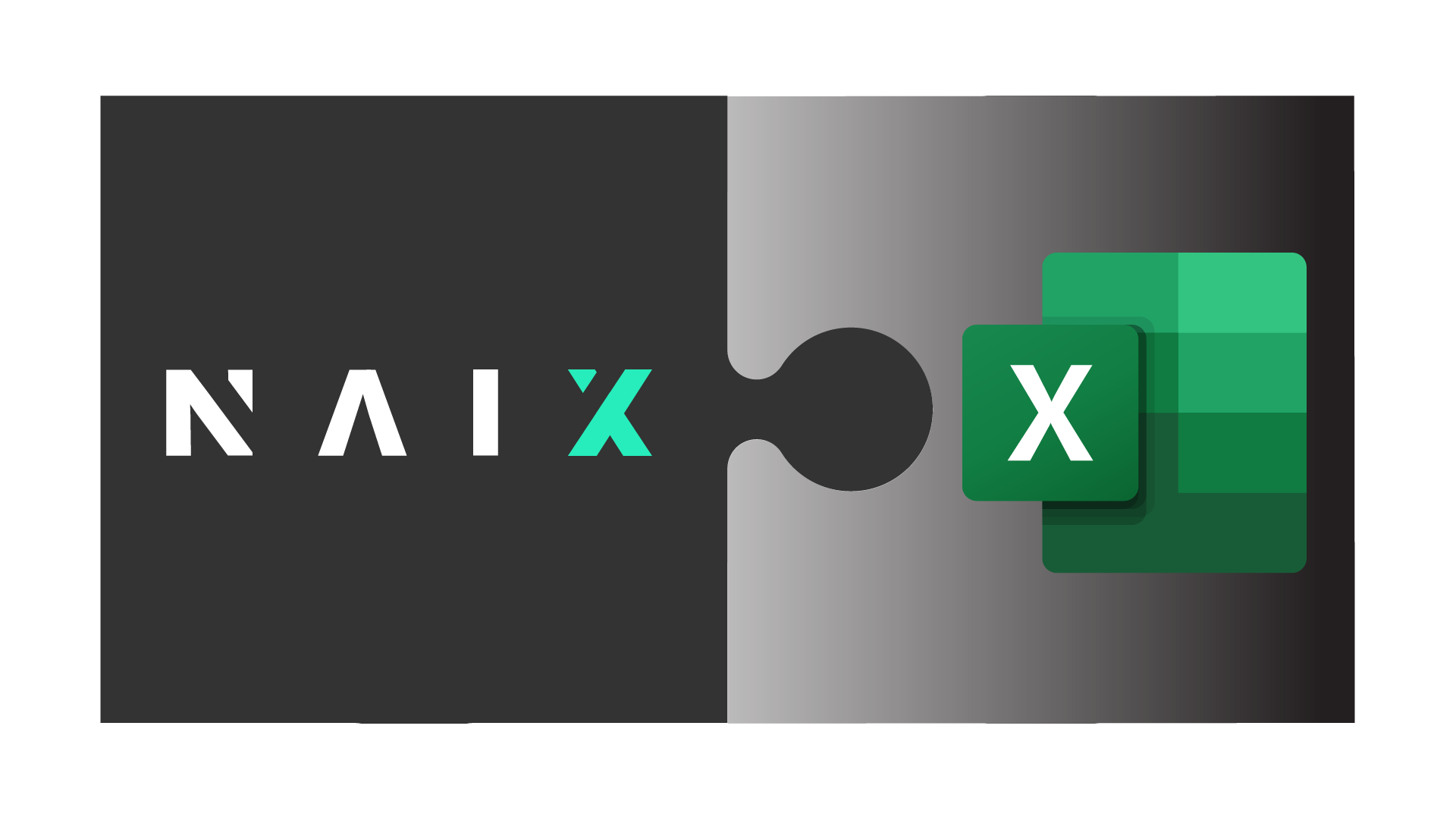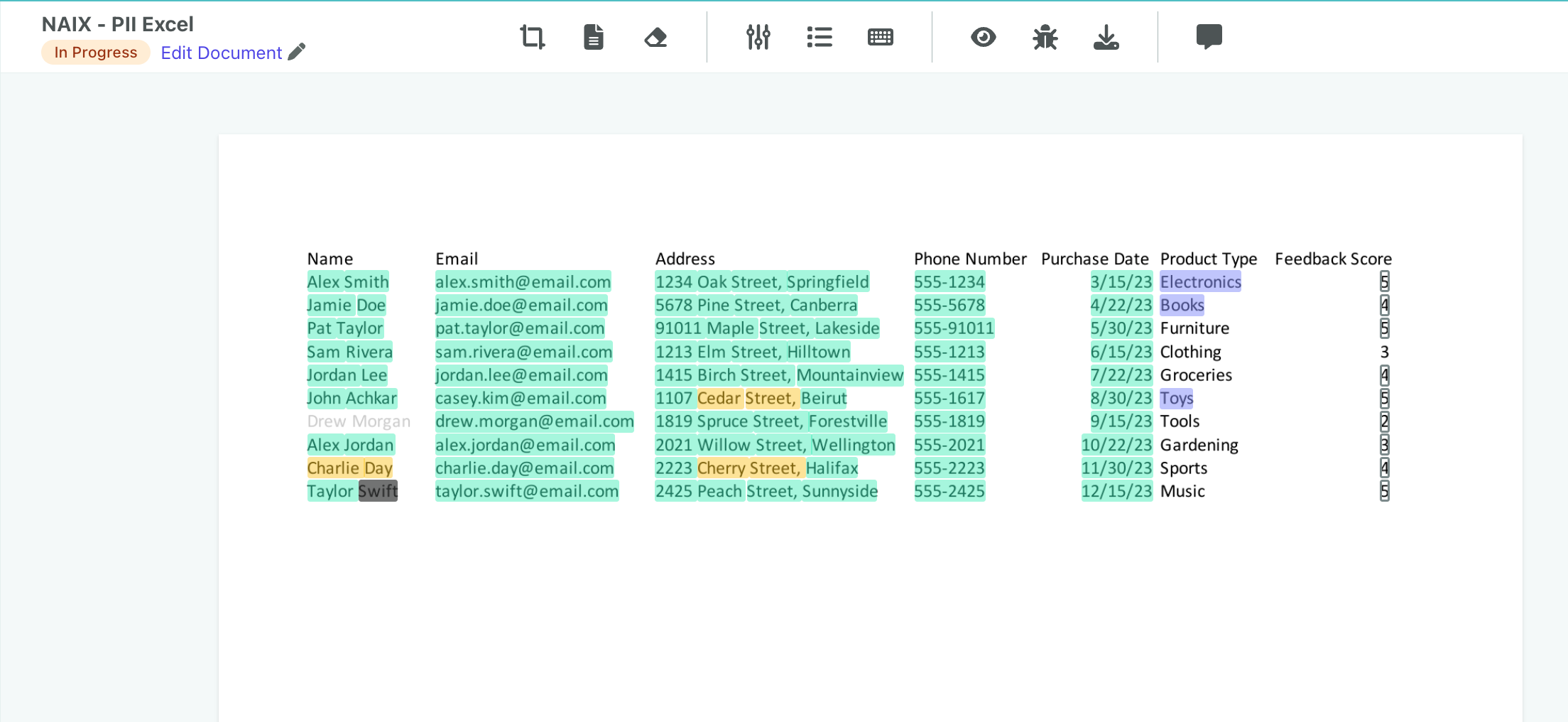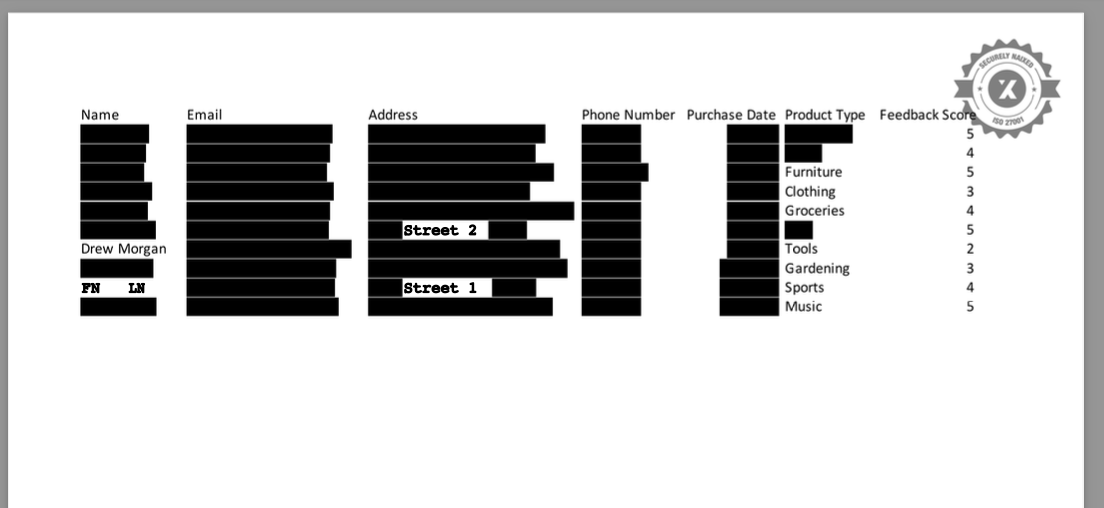
Redact an Excel Sheet with NAIX

Ray Najem
Sales Representative & Webmaster
Data protection has become an undeniable part of our lives, underscoring the need for safeguarding personal information, a burden that companies have to carry. Data protection laws under GDPR are already one of the stringent regulations imposed on companies, and with an ever-changing landscape, one can only wonder what they can do to make compliance easier than what it used to be. Being compliant with the GDPR laws in the EU and other protection acts in the world heavily relies on protecting the data of one's customers and users, thus gaining their trust.
In today's data-driven economy, collecting, analyzing, and sharing data is crucial for innovation, economic growth, and societal advancement. Data informs decisions, powers new technologies, and boosts efficiency across sectors like healthcare, finance, telecommunications, and retail. Balancing the use of data for its vast benefits with the need to protect sensitive information highlights the importance of both leveraging and safeguarding data to ensure privacy and security.
That is where Anonymization, or more specifically redaction, comes into play. As we currently live in a data economy, we can go with the tide instead of against it, just with higher security measures. This allows us to harness the benefits that data has to bring to the table while keeping to the trust that the customers have instilled in us. Redacting people's PII (personal Identifiable Information) is of the utmost priority before sharing the data with other parties, the importance is outlined under Article 5 of GDPR relating to the principles of data processing.
In the interest of helping you become GDPR-compliant, protect your reputation, while saving you time and energy with redaction, we have our NAIX redaction tool to offer. You will get a glimpse of how it works, and for this article especially, how it works with Excel sheets.
When would you need to redact Excel sheets?
To understand when you need to redact Excel sheets, let's create a scenario when you would need it. The scenario: you are an e-commerce/healthcare company that needs to submit how many products they have sold, while keeping the customer's data hidden. There are 2 ways to redact their information, one of which is with the help of AI.
If done manually: You will have to hire employees or freelancers who would manually redact the sheets. Taking into consideration the need to look for the PII information and run a thorough revision of the documents is very time intensive. The freelancers work on an hourly basis with a minimum of €12.43 (minimum wage in Germany), taking on average of up to 5 minutes to redact one page manually. That is besides the costs that a company needs to take on to hire that employee, like the taxes to be paid to the state through the Tax Office.
If done with NAIX's AI: The burden to look for all the PII information is overtaken with the AI redaction tool. Employing the tool saves a tremendous amount of time, thus fewer hours put towards redaction, and the easy learning curve with the User Friendly UI, make NAIX a promising tool that would save money and time invested in the documents. To learn more about the pricing plans, click on this link.
NAIX Redaction Tool in Action
To showcase how the redaction tool works when redacting Excel sheets, we created a sample Excel document. To start, we downloaded the Excel sheet in PDF format and then uploaded it to NAIX.
This is how it looks after uploading it:

The 5 things going on in that screenshot:
The Green highlight: Everything that the AI was able to detect and anonymize (redact) on its own, otherwise referred to as AR (automated redactions), as labeled in the app. You might see that some redactions in that screenshot, although they are PII, are not green, in the following I will explain why.
The Purple redaction: These words are redacted by the user themselves, labeled as UR (user redactions) in the app. In that example, I redacted non-confidential information as an example, but in case you want to leave all streets unredacted (by unselecting the Street Entity) except for a select few, then UR would make sense.
The Yellow highlight: That refers to Pseudonymization or more commonly known as Data Masking. Using that function, we can replace the words we select beforehand in a Preset, or through uploading a CSV file, and replace them with another word, otherwise known as the Pseudo. Data masking helps have a better document flow as the words are replaced and not just replaced with black rectangles.
The Greyed out words: This function, whitelist, is used when we want to leave some specific words unredacted, for instance a CEO's name. To do that, all you need to do is right click and add it to the whitelist or create a whitelist and upload all the words you want whitelisted through a CSV file upload or typing them in.
The Black highlight: This function, Blacklist, is used to redact for certain the words in all instances in the document or over many documents if Presets are used. In the example above, "Swift" was added to the Blacklist, so it would be redacted all over the document or multiple documents if many were selected. Below you will see how the document looks like after being downloaded redacted in a PDF format.

Did you think the explanation was going to be longer than that? There is no point in putting more effort than that in redacting a document, which is why NAIX is here to make the process that much easier. To learn more about how to properly use the tool with all the functionalities. Check this link out, which will take you to our user manual.
This article will be the first one in a series of articles that dive deep into how to use and get the most out of NAIX's AI redaction software. This time we covered how to redact an Excel sheet with NAIX. You can expect that other articles will cover how to properly use and get the most out of the other features like, lists that were previously mentioned, crop function, and Presets. These functionalities help redact a plethora of documents in no time.
Speaking of blog series, our upcoming blog will cover the difference between Data Masking and Anonymization that was mentioned in this blog, but in more detail. Understanding the terminology of the software that we so often work with, will help in understanding a company's needs, as well as learn to optimize the applications we onboard.
Interested and would like to book a Demo with us?
Book a Demo with Ray: carried out in English or French
Book a Demo with Patricia: carried out in German